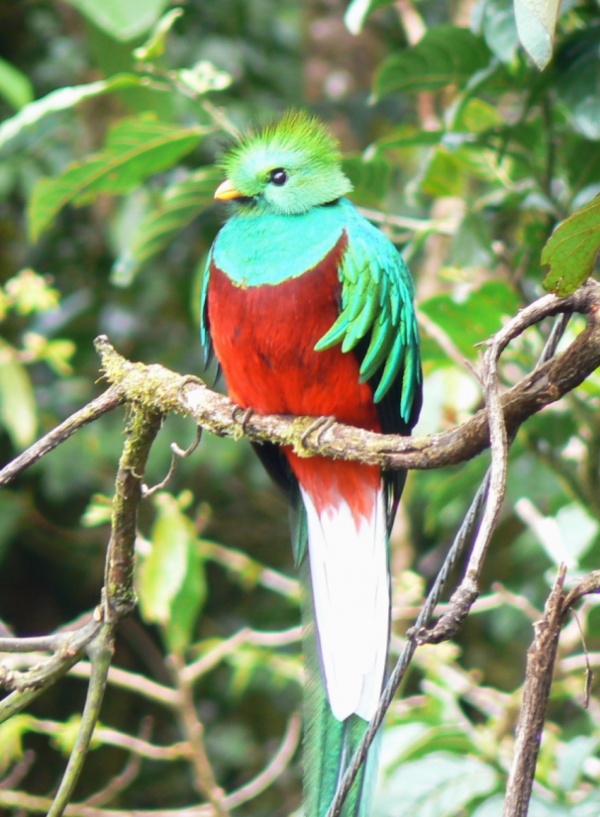Facts About Resplendent quetzal
The resplendent quetzal, a stunning bird in the trogon family, is renowned for its vibrant plumage. This beautiful bird is found from Chiapas, Mexico, to western Panama and holds a special place in Mesoamerican mythology. It also serves as the national symbol of Guatemala, proudly represented on the country's flag and currency.
Belonging to the genus Pharomachrus, the resplendent quetzal is one of five species known as quetzals. It was first described by Mexican naturalist Pablo de La Llave in 1832. There are two recognized subspecies: P. m. mocinno and P. m. costaricensis.
In appearance, the resplendent quetzal is the largest member of the trogon family. It boasts colorful plumage, with a green body and a red breast. The male is particularly striking, featuring a long tail streamer and a helmet-like crest. The bird's feathers appear green due to iridescence and have a unique fringed look on the wings. Interestingly, the quetzal has thin skin and has evolved thick plumage for protection.
Behaviorally, resplendent quetzals are not strong fliers. They primarily feed on fruits but also consume insects, frogs, and lizards. These birds nest high up in trees, with both parents taking turns incubating the eggs and caring for the chicks. The breeding season varies across their range, with Guatemala's season spanning from March to May.
Unfortunately, the resplendent quetzal is near-threatened due to habitat loss. However, it can still be found in protected areas and remains a favorite among birdwatchers and ecotourists.
In Mesoamerican myth and legend, the quetzal is seen as divine and is associated with the god Quetzalcoatl. Its feathers were highly prized and used in headdresses by nobility. In Maya culture, the quetzal symbolizes freedom and wealth and is linked to the legend of the hero Tecún Umán in Guatemala.

 Honduras
Honduras